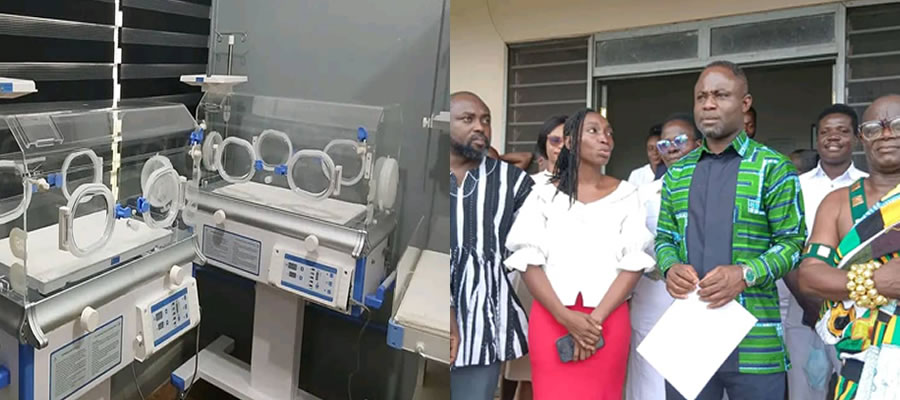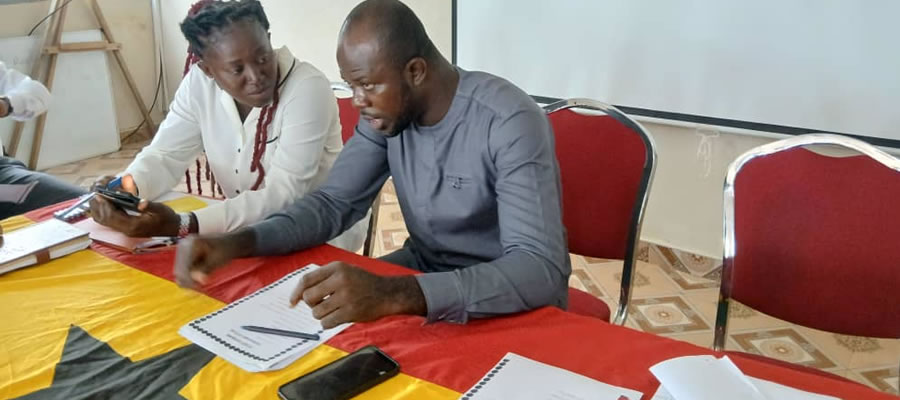

Vulnerability
Introduction
This chapter presents the analysis of persons with disability in Juaboso District in 2010, including types of disability, type of locality of residence, education and economic activity status.
Population with Disability
Table 6.1 presents population by type of locality, disability type and sex. The table shows that 98.8 percent of the population in the district have no disability, and only 1.2 percent have various types of disability and even some have multiple disabilities. A slightly higher proportion among the male population, have disability (1.3%) than among the female population (1.1%).
Types of Disability
The type of disability with the highest proportion of the persons with disability is sight impairment (34.5%), followed by the physically challenged (32.9%), speech (17.2%), emotional disability (15.9%), intellectual disability (15.5%) and hearing (15.2%). The trend in the proportions of the types of disability among the male persons with disability is similar to the district trend except that the proportion with hearing disability (15.5%) is higher than the proportion with intellectual disability (14.7%)
Among the females with disability, intellectual disability (16.5%) ranks third in proportion, after sight (34.2%) and physical (33.5%), and the lowest proportion is hearing disability (14.9%).
Disability type by sex and locality of residence
There are 669 persons with disability in rural locality or 1.3 percent of the rural population compared with 29 persons or 0.5 percent of urban population. The type of disability with the highest proportion among the persons with disability in the urban locality is sight impairment (51.7%), followed by speech (20.7%) and physical (13.8%). In the rural locality both physical and sight impairment have the highest proportions (33.7% each), followed by speech (17.1%) and emotional (16.6%).
With regard to sex in the urban locality, 52.9 percent of the males with disability have sight impairment, and 17.6% each have speech and physical disabilities. Among the females with disability in urban locality, 50.0 percent have sight impairment, 25.0% have speech disability and 16.7 percent have hearing problem. In the rural locality, 33.9 percent of males with disability have sight problem, followed by 33.1 percent with physical problem and 18.2 percent with speech problem. Among the females with disability, 34.5 percent have physical problem, followed by 33.5 percent with sight disability and 16.8 percent each with intellectual and emotional disabilities.
Disability and Economic Activity Status
Table 6.2 shows disability type of persons 15 years and older in the district by economic activity status and sex. None of the persons with disability in the district is unemployed. However, 36.1 percent are economically not active. A higher proportion among the persons with hearing disability (69.6%) is employed, followed by 60.6 percent of persons with sight disability. The lowest proportion of employment is among persons with physical disability (47.3%), followed by persons with intellectual disability (51.2%). In all cases, the proportion among a group of specific disability type that is not employed is economically not active.
Among the males with disability, a higher proportion among those with speech disability are employed (68.9%), followed by those with hearing disability (66.7%) and those with sight disability (58.4%). The lowest proportion of employed is among persons with physical disability (44.9%) and those with intellectual disability (47.6%).
Among the females with disability, a higher proportion among those with hearing disability are employed (73.5%), followed by those with sight disability (63.3%) and those with intellectual disability (54.8%). The lowest proportion of employed is among persons with speech disability (45.2%), followed by those with physical disability (50.0%).
Disability, Education and Literacy Status
This section focuses on literacy status and level of education of persons with disability in the district in 2010. Table 6.4 shows the distribution and educational attainment among people with disability.
Population 3 years and older by sex, disability type and level of education is presented in Table 6.3. About 48.9 percent of persons with disability in the district have never attended school, whiles 40.6 percent attained basic education and 6.7 percent had attended Secondary/SHS and higher level.
The proportion of females with disability who have never attended school is 56.4 percent compared to that of males (42.3%). Again the proportion of males with disability, who attained basic (45.9%), Secondary/SHS and higher (9.0%) levels are more than their female counterparts who attained basic (34.6%) and Secondary/SHS and higher (4.1%) levels. The percentages of female persons with disability who have never attended school (56.4%) are higher than the males (42.3%).
Date Created : 11/20/2017 6:38:12 AM











 facebook
facebook
 twitter
twitter
 Youtube
Youtube
 +233 593 831 280
+233 593 831 280 0800 430 430
0800 430 430 GPS: GE-231-4383
GPS: GE-231-4383 info@ghanadistricts.com
info@ghanadistricts.com Box GP1044, Accra, Ghana
Box GP1044, Accra, Ghana